Original Ironman Henry Forrest
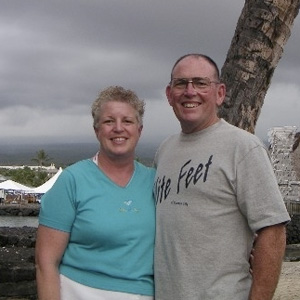
In 1978 Henry Forrest was another one of those adventurous souls who plunged into the waters of Oahu for the start of a crazy new event called Ironman. He talked to Slowtwitch about his memories of the event and a much more important recent battle.
ST: Henry, we understand that you have been dealing with pancreatic cancer recently. Can you tell us how you are doing?
Henry: Yes, I was diagnosed with Pancreatic Cancer on August 1st of 2007. I’m doing very well – recuperating from major surgery (Whipple) in April and working on regaining the 60 pounds I lost following the surgery. I’ve gained about 20 back and am now trying to build up my strength and stamina. I underwent 5 months of weekly chemo and 5 weeks of daily radiation treatments, followed by the surgery. The surgery took a lot out of me – both literally and physically – but, I went back to work this week (8/4). Pancreatic cancer has a very low survival rate, but I’m really a walking miracle because in spite of CTs and biopsies confirming the Pancreatic Cancer, and in spite of the fact the location and growth of the tumors (2) was tracked and noted by at least 6 surgical oncologists, there was “no evidence of tumors” when the surgeon opened me up. He opted to proceed with the Whipple as a precaution because if even one malignant cell was left behind, there would be a recurrence. The surgery is tough, but just the fact I’m still living has beaten the predicted odds. Every chance I get, I encourage support for pancreatic cancer research in the hopes of finding a cure for this dreaded disease. The support I have received from family, friends, co-workers and the triathlon community has been incredible, and it made an enormous difference throughout my treatments and recovery from surgery.
ST: Have you been involved with triathlon since that first Ironman in Hawaii?
Henry: In total, I have completed six Ironman competitions – 1978, 1979, 1980, 1982, 1988 and most recently, 2004. As a Marine on active duty, it was not always possible to get back to Hawaii for the event. In addition, I have run a number of smaller triathlons, although the Ironman has the most special place in my heart. I began my Try-A-Tri business in 2006 to sell unique and motivational t-shirts and to keep in touch with the triathlon community. We travel in the state of Georgia and in neighboring states during the tri season and I have thoroughly enjoyed talking to people about my experiences that first year of 1978. Triathletes, both new and experienced, are incredibly interested and intrigued about how Ironman began.
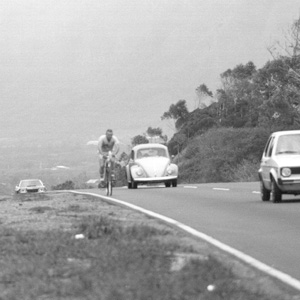
ST: Can you tell us about your 1978 race day memories?
Henry: Race day started out beautifully. My support crew and I arrived at Sansui beach before daylight. Some people were already there, and as I remember it, it was very casual.
The rules didn’t specify any particular stroke, so I thought I would stay with free style as long as I could and then do something else. It wasn’t long before I was tired of freestyle. I did something like a sidestroke for a while and then went back to free style. I alternated with those two until I just had to try some other alternatives, which looked like a backstroke and a breaststroke.
If I had known what I was in for on the bike portion of the race, I would have been worried about getting out of the water, but I didn’t; so I wasn’t. I was excited. All I had to do now was ride the bike a few hours and then I’d be home free. “Just a marathon, and that’s nothing,” I told myself. My plan was working. Or so I thought. I’ll bet I was the first person to ever wear a tri-suit. I had decided to swim in my running shorts, and since I didn’t own a bike I didn’t own biking shorts. I didn’t even know they made such clothing, and they may not have back in the late seventies. Even if they did, I didn’t own a pair, so I was naturally going to bike in my running shorts.
All I had to do in the swim/ bike transition was put my running shoes on. My borrowed “Free Sprit” bike didn’t have toe clips, so I wore running shoes. In theory, I thought that if I biked in running shoes, that would speed up my bike/run transition because I wouldn’t have to take time to change. Man, everything was starting to fall in place. I got my shoes on, pulled a tee shirt on and started my bike ride. My problem was that I hadn’t practiced enough to know where the gears were when I needed them. I would start up a hill and start experimenting with which gear I needed. I would shift and it would get harder, so then I would shift again. Sometimes it got easier, sometimes harder. I just didn’t know which sequence to use or where each gear was. “This is insane,” I thought. “I don’t want to do this the whole way.” But at this time, I didn’t seem to have another alternative.
After going up the hill that overlooks Hanama Bay, I felt help was on the way. A rider was coming from behind me, and he didn’t seem to be having any trouble at all. It was Frank Day. Biking wasn’t new to him, so as he got within speaking distance, I asked him if he could tell me how to shift the gears on my bike. He just flew by me like I was sitting still. At first I thought that was pretty rude of him, but hey, it was a race and I was a competitor, so if he didn’t want to give information to the enemy, that was okay. I was a Marine; that made sense. I told myself that I would just have to resort to OJT (On the Job Training). I kept on pedaling and shifting. The weather on race day was great. The sun had come out, and riding along the shore there was always a good breeze. By the time I had gotten around to Kaneohe Bay, it started to rain some, but that was okay too because it gave me a little break from the sun. Although I was getting tired, I felt that if I ever got to the marathon, I would be okay. That was familiar territory for me. Somewhere between the North Shore and the Sugar Plantation I was just riding along in a daze – just pedaling and pedaling mechanically.
I didn’t get to pick up speed as I neared the transition area as I did during the swim. My legs just wouldn’t pedal any faster. I got off the bike, and my support crew was there. Some of the race officials were there too. “You’re doing great. Keep going. Looking good,” they were saying. “Yeah, right,” I thought. I felt like death sucking on a life saver. I didn’t think I had ever been that tired before. But I didn’t have to bike any more. Now I could run. But something was wrong with my legs! They didn’t want to run. They couldn’t run. They had been pedaling for so long and were so used to moving in circles that they still wanted to pedal. Had I ruined my legs? I was afraid that if I looked as uncoordinated as I felt, people would be “cracking up” watching it. It was a horrible feeling, but after a mile or so, it started to fade away. I realized I was getting my pace back. My stride was good.
Don’t get me wrong. I wasn’t in a state of euphoria, but I felt really good considering what I’d already put my body through. For the first time, I felt confident that I could finish the thing. That feeling lasted until I had reached the turn-around point of the marathon. I don’t know why, but it seemed that for no reason I was getting tired extremely suddenly, like when a car runs out of gas. One minute you’re going along great, and then it sputters a few times and you’re coasting to a stop. Just like that. I was through. My good stride had been reduced to a shuffle. I was not just tired; I was tired of being tired. I was tired of hurting. I was tired of just shuffling. I was tired of running in the dark and not being able so see well. By that time I had only about three miles to go; I knew I was going to finish. There was no question of “could I;” I was just going to keep putting one foot in front of the other, and sooner or later I would see the finish line. Just over Diamond Head was Kapiolani Park and the finish line. As we topped the crest of Diamond Head, Lou and Nolan left me to get to the finish line. I was okay, nothing would stop me now. It was just before midnight, and it was misting rain. I was seeing by the light of the street lights, but I couldn’t see the finish line. I thought that it must be right in front of me, but where was it? I couldn’t see it.
I could imagine the crowd encouraging me on. It just had to come into sight soon. Then I could see the crowd. Lou and Nolan were the entire crowd. The voices I was hearing were the same ones I had heard all day. Lou and Nolan were the only people there, except for one man sitting in a lawn chair with a stop watch. “Are you doing the triathlon?” he said. “Yes, I am. I’m Henry Forrest.” “Good job,” he said. And that was it. It was over. I had done it. Then we all got in the van and went home. I was an IRONMAN.
ST: Looking back at today’s equipment compared to what you had then, is it amazing to you how much stuff has changed?
Henry: Definitely. In 1978 we didn’t have: aerobars, toe clips, carbon fiber, titanium, clip-on shoes, tri suits, heart monitors, nutrition or advanced training methods. And of course, there was no such thing as a tri bike. They were all unheard of back then … probably a good thing … I had enough trouble figuring out how to ride the Free Spirit! I had not been on a bicycle since junior high school, and only rode the Free Spirit a couple of times prior to race day.
ST: What kind of bike are you riding now and what did you ride then?
Henry: One of my “show and tell” items when I talk to triathletes is a replica of the Sears 10-speed Free Spirit bicycle I borrowed and rode in 1978 and 1979. I encourage the athletes to pick it up, and they are amazed at how heavy it is. In 1980 I was no longer stationed in Hawaii, and I purchased a used Raleigh touring bicycle for $150 and rode it in the 1980 Ironman. In 1982 I moved to a used Dave Scott Ironman bike. For the 10th anniversary in 1988, I purchased a silver GT Strke. When I knew I was going back in 2004 to run the event with my daughter, son, and two sons-in-law, I purchased a Trek 2100 (still a fairly low-end bicycle).
ST: Will we see you in Kona this year for the 30th anniversary Ironman Hawaii?
Henry: I would love to be there. A couple of my Original Ironman buddies are participating in the event, and it would be wonderful to be at the finish line for them. At this writing, it doesn’t seem likely, but it would be great if it worked out where I could be.

ST: Can you describe your athletic background and who or what inspired you to take part in 1978?
Henry: I have to credit my wife with getting me involved in Ironman. She is a reader, and while I would just briefly scan the headlines of the newspaper, she would read it very thoroughly. So she saw the very small article in 1978 which briefly described the event and directed those interested to contact John Collins. She read it to me saying, “I think you should do this.” When I heard all that was involved I replied, “That’s crazy? I can’t do that.” Her reply was, “Well, you’re crazy.” But, I began to toy with the idea, and told my “Run for Lunch Bunch” buddies I was thinking about participating. They all thought I was crazy, and pleaded with me not to do it. After meeting with the others at John Collins’ home, I committed to run the event and paid my $5 entry fee (yes – with a $2 rebate later). Two of my running buddies offered to refund my entry fee if I would change my mind, but by then I was determined to give it a try. I was a distance runner – at least 10 miles a day at lunch, and often ran home at the end of the day. Almost every weekend I participated in some running event on the island, including the Honolulu marathon and the Oahu Perimeter Relay Race. But, I had not ridden a bicycle since junior high school, and probably the only swimming I had done was from the diving board to the side of the pool (aside from what I did in the Marine Corps). So, I was quite a bit out of my comfort zone in competing in a triathlon.
ST: What did you do to get ready then?
Henry: My biggest problem was that I didn’t have a bicycle! Back then you just didn’t see many adults on bicycles; at least, I didn’t. Cycling wasn’t the craze that it is now. When I was a child, one of the hottest bikes you could even dream about was called an “English racer” that had gears on it, and was the fastest bicycle around at that time. I put out the word that I needed a bicycle, and finally, a few days before the event, a major on base said he had one I could borrow. When he told me that it had 10 gears, I got so excited. I could just envision that English racer I had dreamed about as a young boy. When I drove up to his house to get it, I saw a yellow (Marines don’t do yellow very well.) bicycle in the yard. It had a little white wicker basket on the front, and a child’s seat on the back . . . I just about died. But, the major helped me get the basket and the seat off, and then it looked more like the “racing bike” I was looking for. The next problem was learning how to ride it. I didn’t have much time to do that, and as Frank Day can tell you, even on race day, I still didn’t have the gears mastered. Frank thought it was hilarious. My master plan was to get through the swim, then struggle through the bike ride any way I could, so that I could finally get to my comfort zone – the run. I didn’t think the bike ride could be “that hard” … after all, you get to sit down the whole time! Just prior to the event, I instructed the guy who was accompanying me on the swim with his surfboard. Since I had never done any rough water swimming to speak of, I told him to stay in front of me in the water so that I could site myself on the surfboard rather than to the land. I think that strategy paid off for me.

ST: How much training are you doing now?
Henry: The past year I’ve been battling cancer and just trying to stay in the land of the living. But, prior to that I had been running fairly regularly, biking occasionally, and taught Boot Camp classes at a health club six times a week (core exercises such as those we did in the Marine Corps). I had stayed in excellent physical condition over the years, although I’ve always fought to keep my weight down. I used to tell people that I could look at a plastic apple and gain weight! (Never in all my years did I think I would be trying to GAIN weight, rather than lose it.) I am slowly gaining strength and have done some walking, as well as some slow, short jogs. But, I have a long way to go to get back in the physical condition I was in BC (before cancer).
ST: What are you up to these days in general?
Henry: I have returned to my five-day-a-week job with Merrill Lynch and have begun to get back to the little triathlons in our area with our t-shirt business. I am overseeing the Boot Camp classes but am not yet able to lead them. But, I’ll be back. It will just take time. I have always enjoyed yard work, and I’m beginning to get back to that. We now have eight grandchildren, and I spend as much time with all of them as possible. We’re more fortunate than in past years because all of them are in close proximity to where we live. Our eighth grandchild was born on May 25th , and I never thought I’d be around to meet her, so when I see her I get a little emotional – just thankful to be able to hold her and the other grandchildren.
ST: Do you follow other sports?
Henry: Since we live in the Atlanta area, I enjoy keeping up with the Braves, Falcons, and the Georgia Bulldogs (“Go Dawgs”) – although, some years are better than others! My son and I are also big NASCAR fans, so we follow that sport pretty closely. Most of the other sports I follow are the ones our grandchildren participate in, as well as the triathlons our children and grandchildren run. It is so exciting to see all the kids who are running triathlons now. It’s important to encourage them in our sport, and as triathletes I think we have an obligation to give back to the sport. I am so fortunate to have been in the right place at the right time and to have been able to be in that inaugural Ironman. My family has three generations of triathletes now, and these young kids are a whole new generation of athletes to carry on the sport we began in 1978.
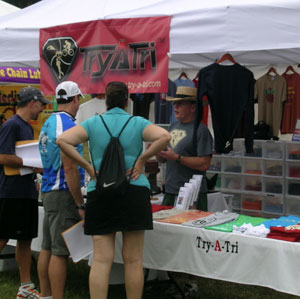
ST: Are you still in contact with any of the original Ironman participants?
Henry: Tom Knoll and Dave Orlowski are two close friends of mine. I also stay in touch with, although not as regularly, Gordon Haller, Frank Day, Archie Hapai, Jon Dunbar, John Collins, and Butch Irving. Tom Knoll just completed a 3,300 mile run across the United States which took him 126 days – averaging at least 30 miles a day. Some of my family drove me to Washington, D.C. to surprise Tom when he completed his run at the Iwo Jima monument on July 4th. Dave and I ran (Well, I shuffled.) across the finish line with Tom. I have spoken with a couple of the others by phone a time or two over the years, but I am fortunate to be able to count several of the Originals as good friends of mine. We definitely are a rare breed!
ST: Can you tell us about your diet now?
Henry: I’m a meat and potatoes man, and I love southern cooking. There are a lot of healthy foods that I just don’t like – – tomatoes, mushrooms, green peppers, onions, etc. but put me in front of a plate of collards or chicken and dumplings and I’m in heaven! Since I’ve always battled my weight, I got into the habit of eating only one or two meals a day, and since my cancer surgery, I’m being forced to make new habits. I’m supposed to eat 5 or 6 small meals a day, rather than 3 full meals. My stomach is now the size of a tennis ball, so it doesn’t take much to fill me up, and if I get too full, I’m miserable. So, it’s a learning process.
ST: What is the last book you read?
Henry: For obvious reasons, I read Lance Armstrong’s book, It’s Not About the Bike, which my family got for me right after I was diagnosed with cancer.
ST: Is there anything else we should know about you?
Henry: I spent 20 years in the Marine Corps and am a Vietnam veteran. I often wondered why I had so many close calls in Vietnam and was spared. I don’t know the answer to that, but I know that cancer has given me a new appreciation for life, and I’m grateful for each day. I am looking forward to running another triathlon one day, but don’t know that I’ll be able to run an Ironman. But, I’m rooting for all of you who do! I enjoy supporting and encouraging athletes, and I appreciate the opportunities afforded to me to meet so many wonderful triathletes simply because I was one of the 15 that day in 1978 to run the first Ironman.
To read the complete Henry Forrest 1978 race report and check out some nifty t-shirts check out try-a-tri.com
Results 1978 Ironman
1. Gordon Haller (USA) 11:46:58
2. John Dunbar (USA) 12:20:27
3. Dave Orlowski (USA) 13:39:13
4. Ian D. Emberson (USA) 14:03:25
5. Sterling F. Lewis (USA) 14:04:35
6. Tom Knoll (USA) 14:45:11
7. Henry Forrest (USA) 15:30:14
8. Frank Day (USA) 16:38:31
9. John Collins (USA) 17:00:38
10. Archie Hapai (USA) 17:24:22
11. Dan Hendrickson (USA) 20:03:28
12. Harold Irving (USA) 21:00:38




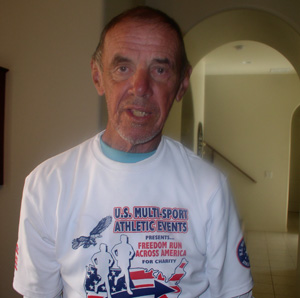

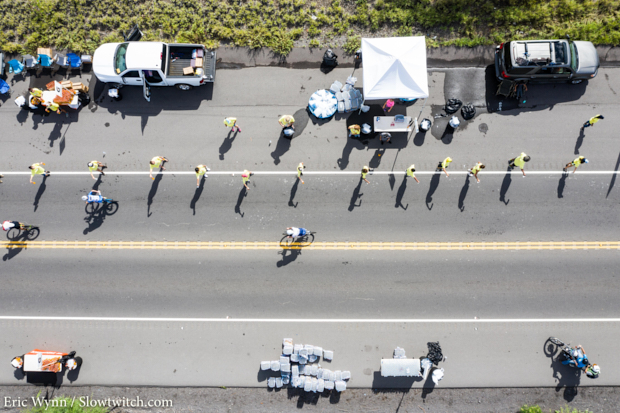

Start the discussion at forum.slowtwitch.com